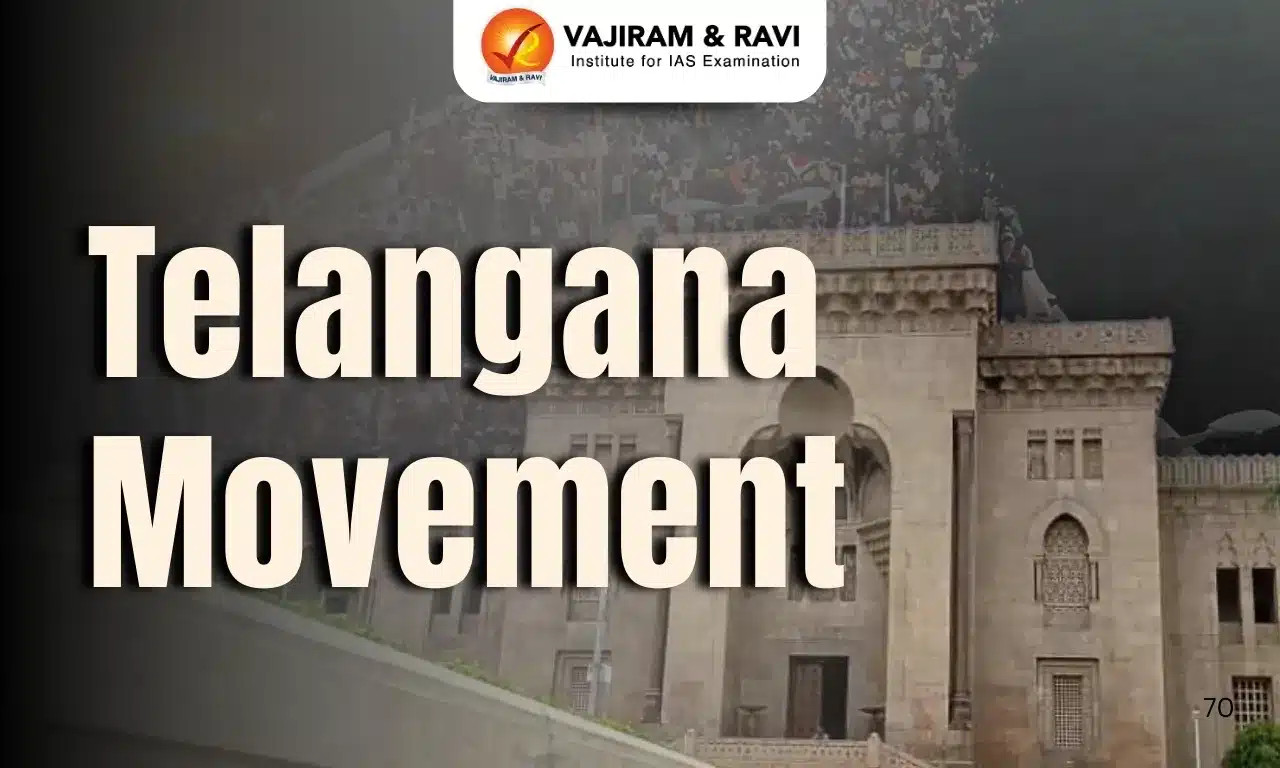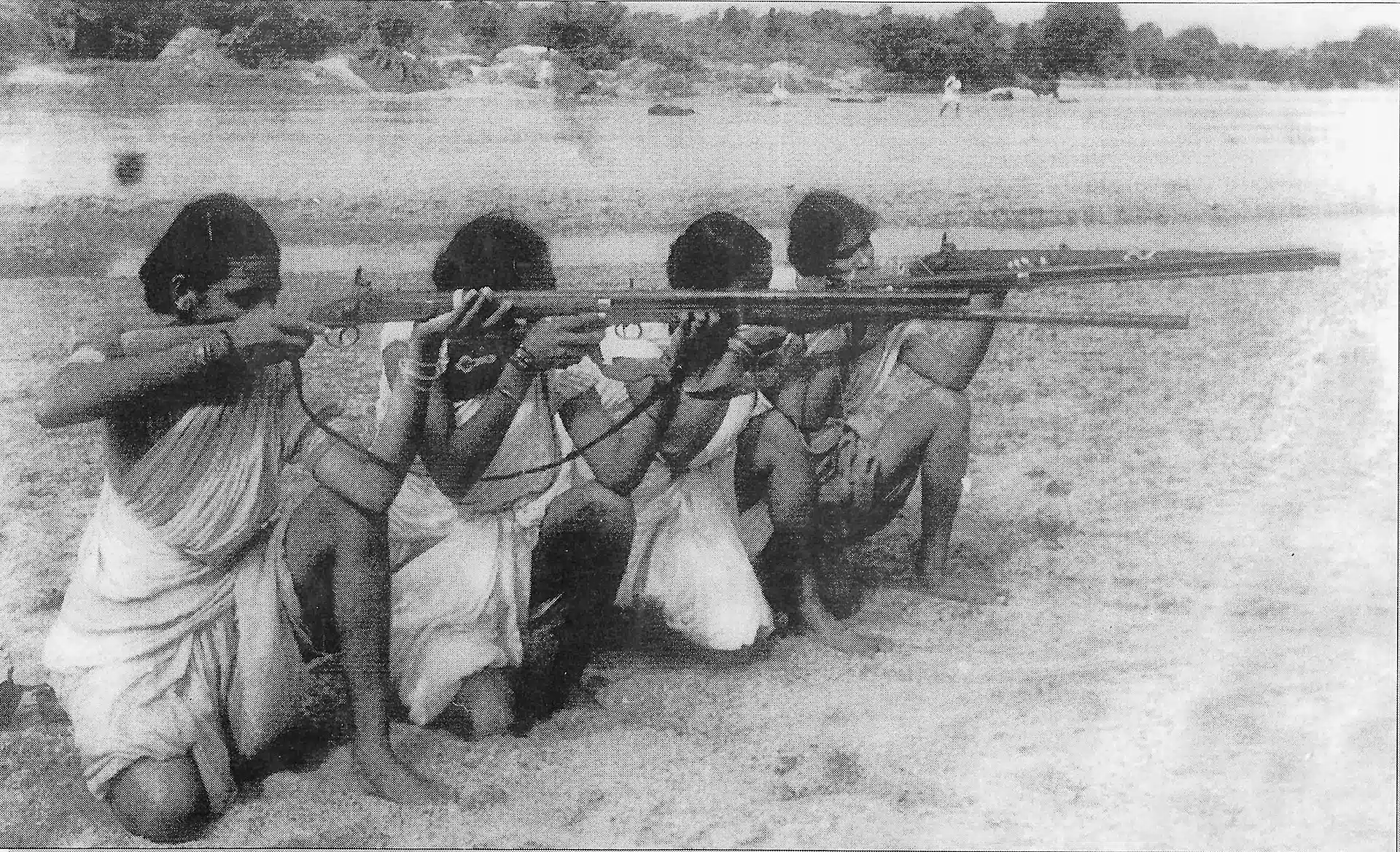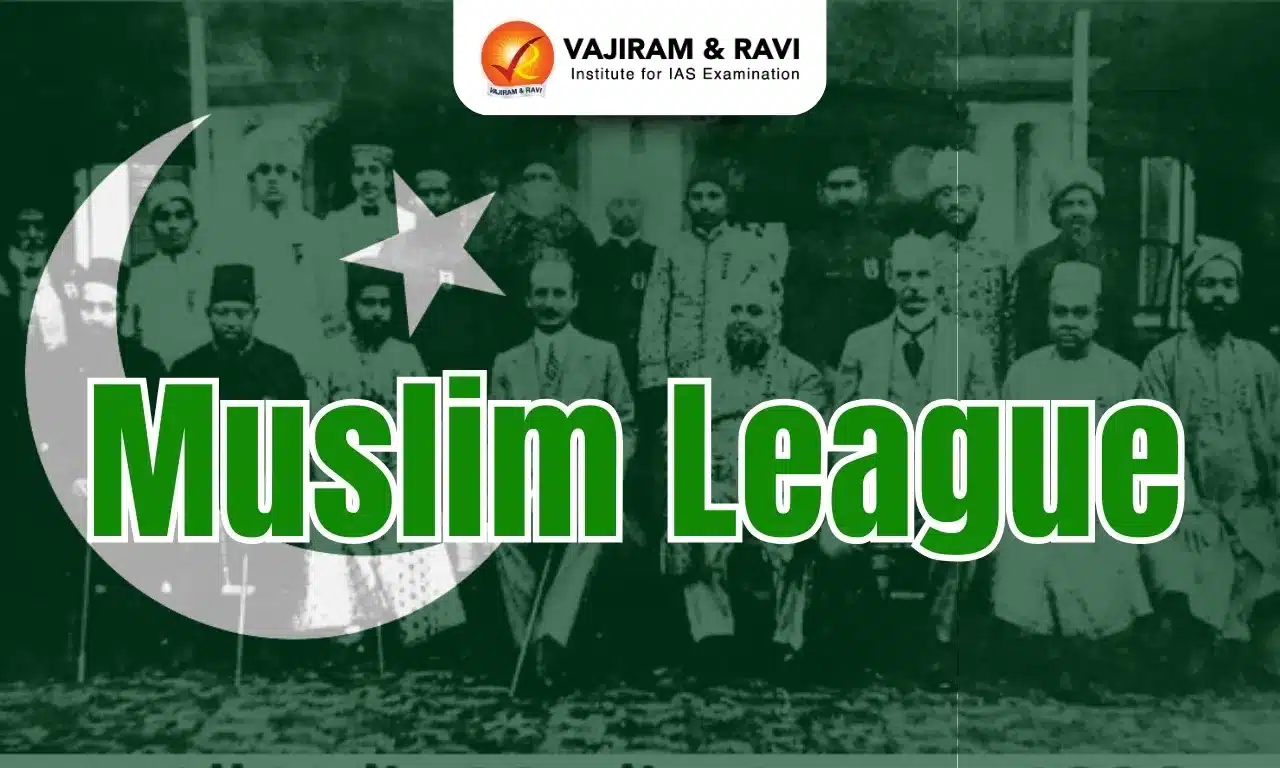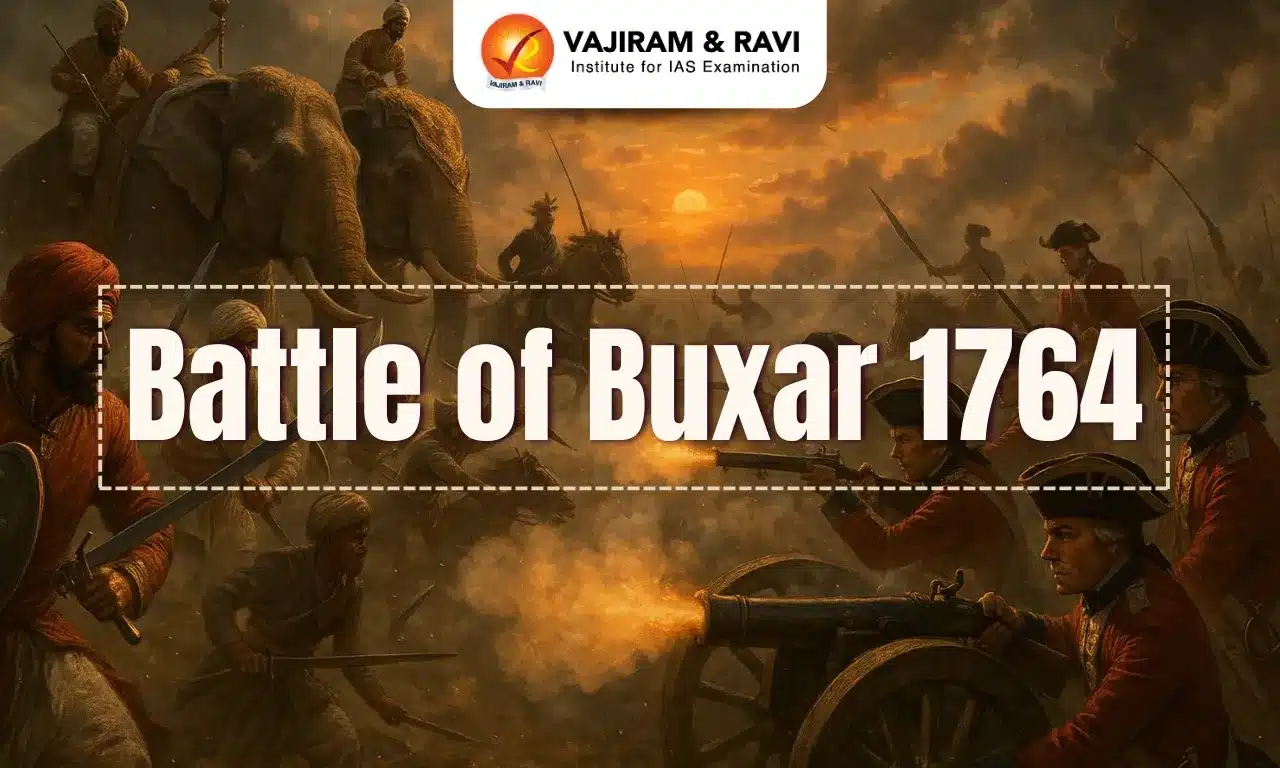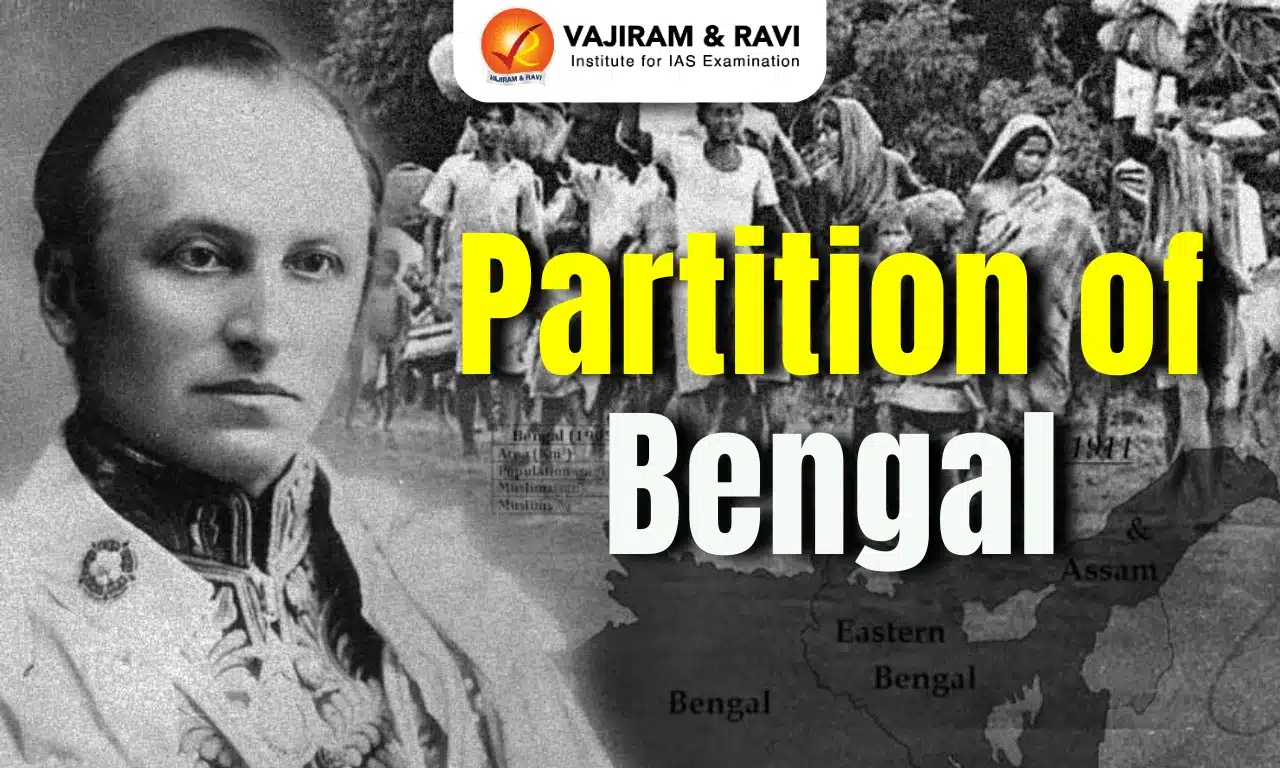Telangana Movement (1946-51) was a peasant uprising against feudal exploitation under the Nizam of Hyderabad, led by the Communist Party of India. Peasants, subjected to the oppressive vetti system and lacking legal rights, sought to abolish forced labour, reclaim lands, and resist cultural suppression through organized revolts.
Despite violent repression by the Razakars and the Nizam’s forces, the movement gained momentum, culminating in Indian military intervention in 1948. The movement ended with land reforms and peasant rights. While the Communist Party eventually withdrew in 1951, the uprising left a lasting legacy on India’s socio-political landscape.
Telangana Movement Background
Telangana Movement (1946-51) was a peasant uprising led by the Communist Party of India against the oppressive landlord system supported by the Nizam of Hyderabad. It arose from widespread socio-economic exploitation, with peasants subjected to the vetti system (forced, unpaid labour) and denied legal rights.
- Initially spearheaded by the Andhra Mahasabha, the movement focused on resisting cultural suppression and demanding land reforms.
- The Telangana Movement became a pivotal moment in Indian history, shaping the future of the communist movement and highlighting the struggles of Indian peasants
Telangana Movement Causes
The Telangana movement (1946-1951) was a result of a combination of economic exploitation, feudal oppression, caste discrimination, and political uncertainty. The movement culminated in a series of uprisings against the Nizam's regime, demanding land reforms, better economic conditions, and social justice.
Telangana Movement Social Causes
Before Indian independence, Hyderabad was a princely state divided into three linguistic regions Telugu-speaking Telangana, Marathi-speaking Marathwada, and a small Kannada-speaking area. Telangana, comprising 50% of the state's territory, included the capital Hyderabad.
- Land Ownership: 40% of the land was either directly owned by the Nizam or given to elites as jagirs (special tenures). The remaining 60% was under a land revenue system controlled by powerful landlords, offering no legal rights or protection to the peasants cultivating the land.
- Exploitation of Peasants: The durras, powerful landowners, controlled most cultivable land and severely exploited peasants through heavy revenue extraction, lacking legal protection. This oppressive system fueled the Telangana Movement's rise against feudal domination.
- Vetti System: This system mandated lower caste families to provide free labour for landlords, with no compensation or rights. Families from the so-called "untouchable" castes were required to send a man daily to perform household labour for the landlord.
- Social Exploitation: Girls from poor families were often kept as slaves in landlords' households and used as concubines, further deepening social exploitation.
Telangana Movement Political Causes
Telangana Movement emerged in response to the socio-political and economic exploitation under the feudal governance of the Asaf Jahi Nizams in Hyderabad. The movement was driven by resistance to cultural suppression, lack of civil liberties, and oppressive practices enforced by landlords.
- Governance and Exploitation: Hyderabad was dominated by a small Urdu-speaking Muslim elite, while the majority of the population was Telugu, Marathi, and Kannada-speaking Hindus. Landlords like deshmukh, jagirdars, and durras exploited peasants through forced labour (vetti) and illegal levies.
- Formation of Andhra Jan Sangham (1922): Resistance began in the 1920s against the suppression of languages and cultures, leading to the formation of Andhra Jan Sangham, which advocated for the rightful place of the Telugu language and culture.
- Evolution of Andhra Mahasabha (1928): Andhra Jan Sangham evolved into the Andhra Mahasabha (AMS), initially focusing on administrative reforms, education, and civil liberties, with a membership consisting of the urban elite.
- In the 1930s, under the influence of leaders like Ravi Narayan Reddy, the AMS shifted focus toward land reforms, abolition of vetti, and the use of Telugu in local courts.
- Communist Influence (1940s): During World War II, communist influence grew within the AMS, and the Communist Party of India (CPI) collaborated with the AMS to mobilize peasants for resistance.
- AMS Split and Peasant Struggles (1944): After a split in the AMS in 1944, the communists and AMS led struggles against landlords, forming village-level committees (sanghams) to organize peasant resistance, particularly targeting vetti and illegal exactions.
Telangana Movement Uprising
Tensions escalated when a hereditary tax collector attempted to forcibly seize land from a village sangam member, leading to resistance from local village leaders and volunteers. On July 4, 1946, villagers organized a protest against the landlord's violence. As they approached the landlord's house, his goons opened fire, killing sangam leader Doddi Komarayya.
- The death of leader Doddi Komarayya sparked widespread anger, leading villagers to burn down the landlord’s house and declare an end to forced labour and evictions. By July's end, the movement spread to hundreds of villages.
- In August 1946, the Communist Party of India announced that villages were under the control of peasants and launched a national campaign to rally support for the uprising. They highlighted the demands of the peasantry and exposed feudal exploitation and brutality.
- In October 1946, the Nizam’s government responded by banning the Andhra Mahasabha, triggering a wave of arrests and military raids. Despite the repression, peasants succeeded in ending forced labour and reclaiming lands taken by landlords.
Telangana Movement Razakar Terror
The formation of a private militia loyal to the Nizam, the Razakars, in 1947, marked a turning point in the Telangana Movement. The Razakars, led by Kasim Razvi, escalated violence and communal tensions. This surge in violence was facilitated by the withdrawal of British forces in 1947, which created a power vacuum in Hyderabad, allowing the Nizam to arm and support the Razakars.
- Razakars attacked villages, looted property, and killed suspected villagers, which significantly worsened the situation. Consequently, the escalation of violence under the Razakars ultimately led to the Indian government's decision to intervene militarily in Hyderabad.
- In February 1948, the CPI introduced a new policy aimed at encouraging guerilla offensives, largely influenced by the success of the Telangana insurrection. The village republics started redistributing land to landless agricultural labourers and evicted tenants, increasing the popularity of the movement.
Telangana Movement Aftermath and Impact
On September 13, 1948, the Indian Army initiated a 'police action' to suppress the violence in Hyderabad. Within a week, the Nizam, the Razakars, and the police surrendered. To win over peasant support, the military administration introduced the Jagir Abolition Regulation in August 1949 and set up an Agrarian Enquiry Committee to propose land reforms. During this period, the Communist Party of India (CPI) faced internal debates over whether to give up arms or continue the struggle.
- Some CPI members advocated for laying down arms to ensure peace, while others feared this would result in losing the movement's gains and betraying the people.
- By late 1950, the movement had weakened, with only isolated guerilla groups remaining, and military repression caused heavy casualties.
- In 1951 the Congress government offered conciliatory gestures to the CPI. After negotiations, the CPI formally withdrew the struggle on October 21, 1951.
| Other Related Posts | |
| Indigo Revolt | Peasant Movements in India |
| Pabna Revolt | Eka Movement |
| Deccan Riots | Bardoli Satyagraha |
| All India Kisan Sabha | Tebhaga Movement |
| Telangana Movement | |
Last updated on December, 2025
→ Check out the latest UPSC Syllabus 2026 here.
→ Join Vajiram & Ravi’s Interview Guidance Programme for expert help to crack your final UPSC stage.
→ UPSC Mains Result 2025 is now out.
→ UPSC Notification 2026 is scheduled to be released on January 14, 2026.
→ UPSC Calendar 2026 is released on 15th May, 2025.
→ The UPSC Vacancy 2025 were released 1129, out of which 979 were for UPSC CSE and remaining 150 are for UPSC IFoS.
→ UPSC Prelims 2026 will be conducted on 24th May, 2026 & UPSC Mains 2026 will be conducted on 21st August 2026.
→ The UPSC Selection Process is of 3 stages-Prelims, Mains and Interview.
→ UPSC Result 2024 is released with latest UPSC Marksheet 2024. Check Now!
→ UPSC Prelims Result 2025 is out now for the CSE held on 25 May 2025.
→ UPSC Toppers List 2024 is released now. Shakti Dubey is UPSC AIR 1 2024 Topper.
→ UPSC Prelims Question Paper 2025 and Unofficial Prelims Answer Key 2025 are available now.
→ UPSC Mains Question Paper 2025 is out for Essay, GS 1, 2, 3 & GS 4.
→ UPSC Mains Indian Language Question Paper 2025 is now out.
→ UPSC Mains Optional Question Paper 2025 is now out.
→ Also check Best IAS Coaching in Delhi
Telangana Movement FAQs
Q1. What was the Telangana Movement?+
Q2. What triggered the Telangana Movement?+
Q3. How did the Indian government respond to the Telangana Movement?+
Q4. What was the impact of the Telangana Movement?+
Q5. What was the role of the Razakars in the Telangana Movement?+



